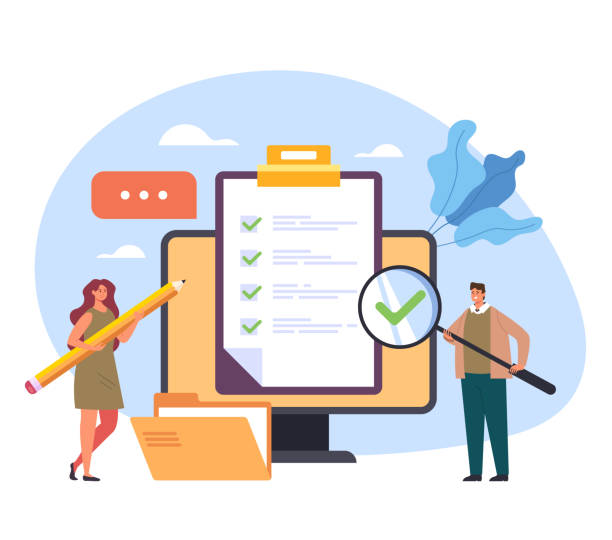Introduction to the Importance of E-commerce Website Design in Today’s World
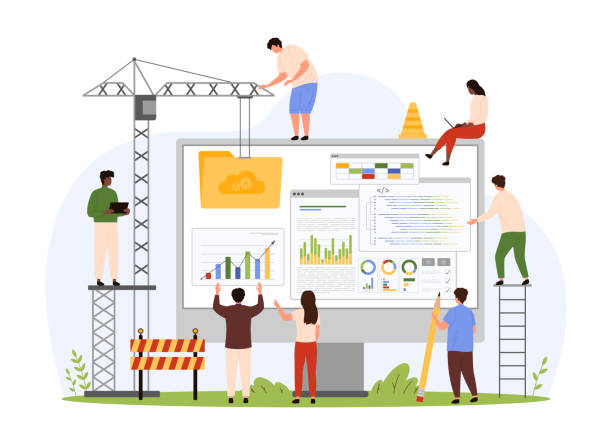
In the current digital age, e-commerce website design is no longer a luxury option, but a necessity for any business that wants to survive and grow in today’s competitive market. This process is not just about having a simple online store, but includes a set of strategic decisions to attract customers, improve user experience, and increase sales. #e_commerce_website_design allows you to offer your products and services beyond geographical boundaries to millions of potential customers. This is especially vital for small and medium-sized businesses that want to have a strong market presence without the need for heavy investments in physical space. An efficient online store allows customers to access your products anytime, anywhere, which in itself leads to increased customer satisfaction and brand loyalty. Furthermore, digital marketing and search engine optimization (#SEO) play a key role in your site’s visibility. Without a strong strategy in e-commerce website building, you will lose a large portion of your market potential. The goal of this guide is to provide comprehensive and practical information to help you develop a successful online sales platform that can meet your business needs and set you on a path to growth. In the following sections, we will delve into the technical and strategic details of online store design.
Does your current e-commerce website design not generate the expected sales for you?
Rasawweb is an expert in professional e-commerce website design!
✅ An attractive and user-friendly website aimed at increasing sales
✅ High speed and security for an ideal shopping experience⚡ Get a free online store design consultation with Rasawweb!
Essential Features of a Successful and User-Friendly E-commerce Website
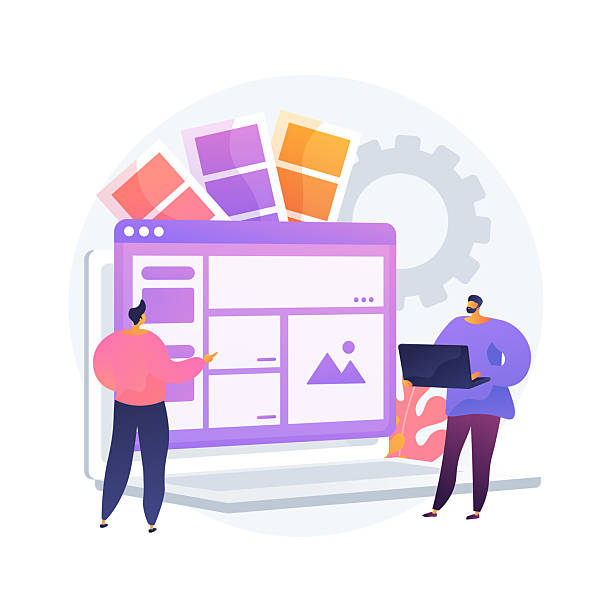
For an e-commerce site to succeed, it must go beyond merely displaying products. User Experience (UX) and User Interface (UI) are among the most important elements. An attractive visual design and easy navigation encourage customers to explore the site further and ultimately make a purchase. Product pages should include high-quality images, detailed and comprehensive descriptions, customer reviews, and information on inventory and pricing. Powerful search capabilities and advanced filters help users quickly find the product they are looking for. Site loading speed is also highly important; a slow-loading website easily loses customers. Additionally, Responsive Design, which optimizes the site for viewing on various devices (mobile, tablet, desktop), is crucial because a significant portion of purchases today are made via mobile. Site security, especially in the payment section and protection of users’ personal information, must be a priority. Providing diverse and secure payment options, including reputable online payment gateways, helps increase customer trust. Finally, efficient customer support via online chat, email, or phone improves the overall customer experience and greatly contributes to the long-term success of your online store. All these features together form a successful e-commerce website design.
Choosing the Best Platform for Your E-commerce Website Design
![]()
One of the key decisions in e-commerce website design is choosing the right platform. Numerous options are available, each with its advantages and disadvantages, and their selection depends on your needs, budget, and technical skills. Common platforms include WooCommerce, a powerful plugin for WordPress; Shopify, a hosted and user-friendly solution; and Magento, suitable for large and complex stores. WooCommerce is a popular choice for many businesses due to its high flexibility and extensive customization options, but it requires more technical knowledge. Shopify, with its simple user interface and strong support, is ideal for those who want to quickly set up a store without much hassle, but it may have limitations in terms of customization. Magento, despite its higher complexity, offers very extensive features for managing products, customers, and operations. In addition, there are other platforms such as PrestaShop, OpenCart, and website builders with e-commerce capabilities (like Squarespace or Wix). Choosing the best platform for your e-commerce site should be done by considering factors such as scalability, required features, budget, and the technical capabilities of your team. This choice will directly impact the ease of management and the growth potential of your online business website.
| Platform | Advantages | Disadvantages | Suitable for |
|---|---|---|---|
| WooCommerce | High flexibility, low initial costs, large user community, deep customization capabilities | Requires more technical knowledge, user is responsible for hosting and security management | Small to medium-sized businesses, those familiar with WordPress |
| Shopify | Ease of use, strong support, high security, no need for extensive technical knowledge | Monthly fee, limitations in deep customizations, transaction fees on basic plans | Startups, small businesses without a technical team, those for whom quick setup is a priority |
| Magento | Very high scalability, extensive features, suitable for large and complex stores | High complexity, requires a specialized developer, high costs | Large companies, multinational stores, businesses with many products |
| PrestaShop | Free and open-source, good flexibility, sufficient features | Requires technical knowledge, smaller user community compared to WooCommerce | Medium-sized businesses, developers with limited budget |
The Importance of SEO and Optimization in the Success of E-commerce Websites
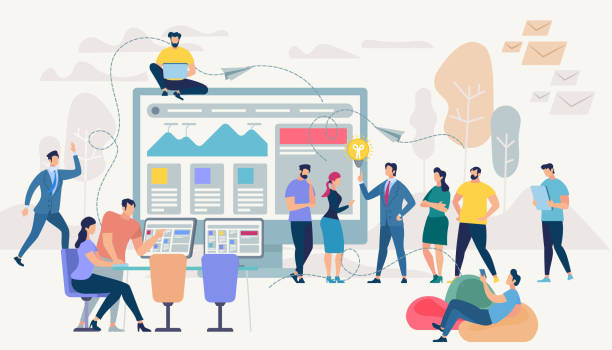
After completing e-commerce website design, the next crucial step is to ensure its visibility in search engines. SEO (Search Engine Optimization) is a set of techniques that improves your site’s ranking in search results and leads to attracting organic (free) traffic. For an online store, SEO includes optimizing keywords related to products, creating quality content for product pages and blogs, improving URL structure, and internal and external linking. Site loading speed, responsive design, and security (using HTTPS) are also important SEO factors. Keyword research to understand what your potential customers are searching for is the first and essential step. Then, these keywords should be naturally used in titles, descriptions, meta tags, and the text of your site’s pages. Technical SEO, which includes optimizing robots.txt, XML sitemap, and structured data (Schema Markup), helps search engines better understand your site’s content. With strong SEO, your e-commerce site will be more visible, attract more traffic, and ultimately experience more sales. This is a long-term investment that brings sustainable results for your online business.
Are you concerned about your e-commerce site’s low conversion rate and not achieving your desired sales?
Rasawweb is your specialized solution for having a successful e-commerce website.
✅ Significant increase in conversion rate and sales
✅ Professional and user-friendly design to attract customer satisfaction
⚡ Ready for a transformation in online sales? Get a free consultation!
The Importance of User Experience (UX) and User Interface (UI) in Increasing Conversions
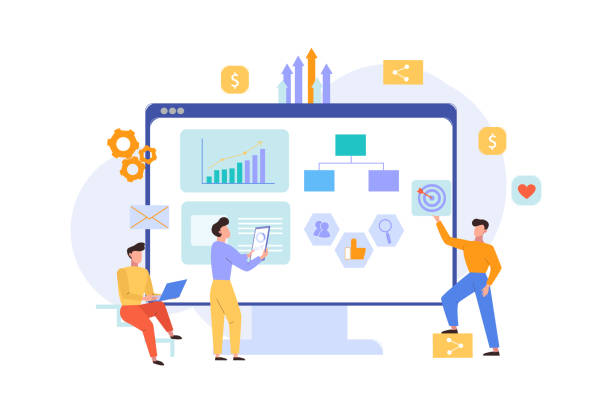
In e-commerce website design, visual appeal alone is not enough; the user is the priority. User Experience (UX) refers to the sum of user feelings and perceptions when interacting with your site. An excellent UX means that the user can easily find their desired product, receive sufficient information, and complete the purchase process without any problems. This includes intuitive navigation, logical page design, and clear messages. On the other hand, User Interface (UI) refers to the visual appearance and interactive elements of the site, including buttons, forms, typography, and color schemes. An attractive and consistent UI conveys a sense of trust and professionalism to the user and complements a good UX. For an e-commerce website, optimizing UX/UI directly impacts the conversion rate. If users cannot easily make a purchase, even with the best products, your site will not be successful. Simplifying the checkout process, providing clear contact and support information, and designing user-friendly registration and payment forms all help improve UX. A/B testing on various UI elements can help you find the best design for your audience. Ultimately, investing in UX/UI means investing in customer satisfaction and sustainable sales growth for your online store. This part of e-commerce website building is just as important as choosing the right products.
Security and Payment Gateways: A Critical Element in Online Store Design
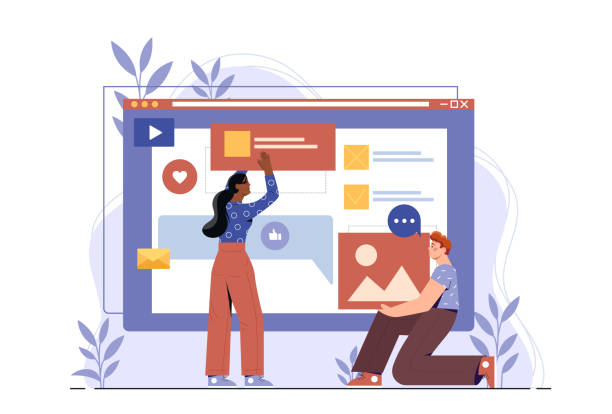
In e-commerce website design, security is one of the most important concerns for both business owners and customers. Users’ personal and financial information must be protected against cyberattacks and unauthorized access. Using an SSL certificate (HTTPS) to encrypt data is the first and most essential step. This certificate is a sign of trust for users and is also an important SEO factor. In addition to SSL, strong security systems should be used to protect against DDoS attacks, SQL injection, and XSS. Regular platform and plugin updates, using strong passwords, and managing user access are other security measures. Payment gateways also play a vital role in transaction security. Choosing reputable and secure payment gateways that comply with necessary security protocols (such as PCI DSS) is of paramount importance. Providing diverse payment options (such as credit cards, digital wallets, and cash on delivery) helps increase customer convenience and conversion rates, but their security must always be guaranteed. An online store that cannot guarantee the security of its users’ information will quickly lose customer trust and face legal issues. Therefore, investing in security is an integral and fundamental part of the e-commerce website development process that should not be overlooked.
Marketing and Customer Acquisition Strategies for Online Stores
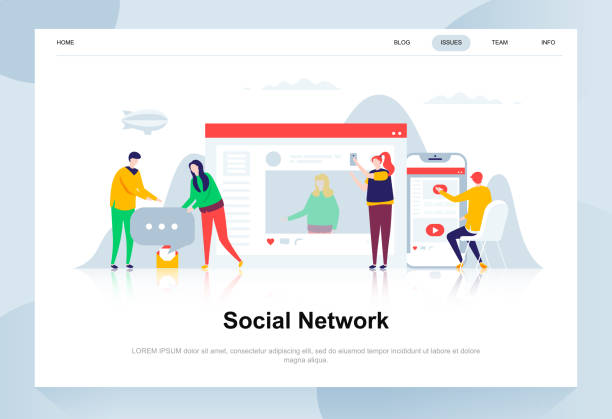
Having a perfect e-commerce site is only half the battle; for real success, you need strong marketing strategies to attract customers and increase sales. Digital marketing encompasses a wide range of activities that help you reach your target audience. Content marketing, through blogging, video creation, and infographics, helps attract organic traffic and establish your credibility as an information source. Email marketing is very effective for continuous communication with customers, announcing discounts and new products, and recovering abandoned shopping carts. Pay-per-click (PPC) advertising on Google and social media (such as Instagram and Facebook) can drive targeted and fast traffic to your site. Active presence on social media and interacting with your audience not only helps increase brand awareness but also provides an opportunity for direct communication with customers and receiving feedback. Collaborating with influencers and launching joint campaigns can also significantly increase your brand’s visibility. Finally, analyzing web analytics data (such as Google Analytics) to understand user behavior and continuously optimize marketing strategies is of high importance. These analytical and marketing approaches complement a strong e-commerce website design and contribute to your long-term success.
| Marketing Channel | Description | Advantages |
|---|---|---|
| SEO | Optimizing the site for higher ranking in organic (free) search results | High-quality and sustainable traffic, increased brand credibility, long-term ROI |
| PPC | Displaying ads in search engines and social networks by paying a fee for each click | Fast results, precise control over budget and targeting, rapid traffic increase |
| Content Marketing | Producing and distributing valuable content (blog, video, infographic) | Attracting organic traffic, building credibility and trust, improving SEO |
| Email Marketing | Sending emails to a list of customers and potential customers | Maintaining communication with customers, announcing new products and discounts, abandoned cart recovery |
| Social Media Marketing | Active presence and advertising on social platforms (Instagram, Telegram, Facebook) | Increased brand awareness, direct customer interaction, targeted traffic |
The Future of E-commerce Website Design: Trends and Emerging Technologies
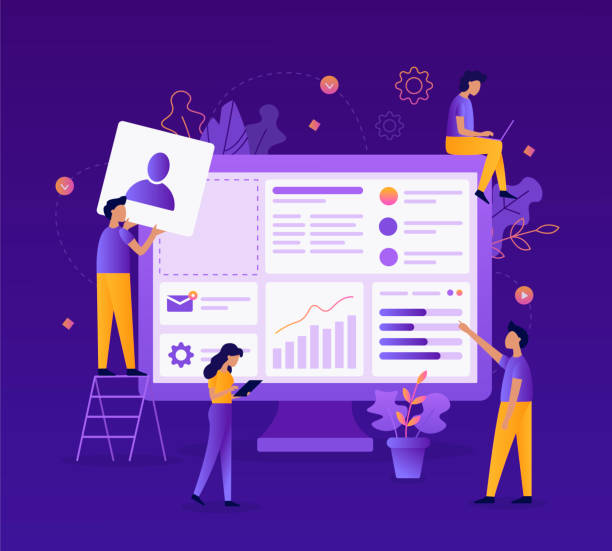
E-commerce website design is constantly evolving, and new technologies are opening new horizons for online businesses. One of the most important trends is personalizing the shopping experience. By using Artificial Intelligence (AI) and Machine Learning (ML), stores can offer personalized products and suggestions based on user browsing and purchase history. Augmented Reality (AR) and Virtual Reality (VR) are also changing how products are displayed; for example, customers can virtually try on clothes or see how furniture looks in their homes. Voice Commerce, which enables purchasing through voice assistants, is also growing and increases the need for site optimization for voice search. Using chatbots and virtual assistants for customer support and answering frequently asked questions improves user experience and reduces the workload of the support team. Furthermore, blockchain and cryptocurrencies have the potential to create more secure and transparent payment methods. These developments show that building an online store is not a static process and must constantly keep pace with the latest technologies and trends to remain competitive in the market. Investing in these emerging technologies ensures a brighter future for your e-commerce.
Do you know that a weak corporate website loses you many opportunities daily? Solve this problem forever with professional corporate website design by Rasawweb!
✅ Creating a powerful and trustworthy image of your brand
✅ Targeted acquisition of new customers and increased sales
⚡ [Get free website design consultation]
Common Mistakes in E-commerce Website Design and How to Avoid Them

While e-commerce website design can be very profitable, there are also common mistakes that can jeopardize your success. One of the biggest mistakes is neglecting user experience (UX). A site with complex navigation or a long and confusing checkout process quickly loses customers. Lack of mobile optimization is also a major error, as a huge portion of online purchases are made via mobile devices. Low-quality images or insufficient product descriptions can also prevent customers from making a purchase decision. Many businesses forget to prioritize SEO, and as a result, their site is not seen in search results. Lack of contact and support information, or lack of transparency in return and shipping policies, erodes customer trust. Also, neglecting site security and not using SSL can lead to data loss and damage to credibility. Choosing an unsuitable platform without carefully reviewing needs and future scalability can also be problematic in the long run. To avoid these mistakes, it is essential to engage in detailed planning from the outset, understand your users’ needs, and constantly collect and analyze customer feedback. Investing in professional e-commerce website design and paying attention to details will protect you from these challenges and pave the way for a successful e-commerce business.
Launching and Maintaining an E-commerce Website After Design

After completing e-commerce website design, the launch phase begins, which includes uploading products, final payment and shipping settings, and thoroughly testing all functionalities. But the work doesn’t end there; continuous maintenance and updates are vital for its long-term success. This includes security updates, fixing technical bugs, and adding new features. Content management and regularly adding new products keep your site alive and engaging. Monitoring site performance using web analytics tools (like Google Analytics) to track traffic, conversion rates, and user behavior helps you identify strengths and weaknesses and improve them. Excellent customer support via online chat, email, or phone not only helps solve customer problems but also builds loyalty and increases their return visits to your site. Inventory and order management must also be accurately performed to ensure customers’ shopping experience is not interrupted. Additionally, you should always look for opportunities to improve SEO and marketing strategies. E-commerce website development is an ongoing project, and attention to these details after launch ensures that your online store continues to grow and flourish and becomes a sustainable source of income.
Frequently Asked Questions
| Question | Answer |
|---|---|
| What is e-commerce website design? | The process of creating a website that allows displaying products or services, adding them to a shopping cart, and conducting online transactions. |
| Why do we need an e-commerce website? | 24/7 access to customers, increased geographical sales reach, reduced operational costs compared to a physical store, and the ability to analyze customer behavior. |
| What features are important in e-commerce website design? | User-friendly and attractive appearance, product categorization, shopping cart, secure payment gateway, search functionality, customer review section, and inventory management. |
| How much does e-commerce website design cost? | It varies depending on complexity, requested features, custom design or use of ready-made templates, and the company you choose. |
| What platforms exist for e-commerce website design? | Content Management Systems (CMS) such as WooCommerce (on WordPress) and PrestaShop, or proprietary and cloud platforms like Shopify (external) and Sazito (Iranian). |
And other services of Rasa Web Advertising Agency in the field of advertising:
Smart Direct Marketing: A combination of creativity and technology for campaign management through specialized programming.
Smart Customer Journey Map: A fast and efficient solution for increasing sales with a focus on specialized programming.
Smart Customer Journey Map: Revolutionize sales increase with precise audience targeting.
Smart Website Development: A fast and efficient solution for increasing site visits with a focus on smart data analysis.
Smart Direct Marketing: A fast and efficient solution for increasing click-through rates with a focus on precise audience targeting.
And over a hundred other services in the field of online advertising, advertising consultation, and organizational solutions.
Online Advertising | Advertising Strategy | Advertorials
Resources
Comprehensive Guide to E-commerce Website Design
Video: How to Build an Online Store?
Complete Checklist for Online Store Design
Digikala’s Guide to Launching an Online Store
? Your business deserves the best! With Rasawweb Afarin Digital Marketing Agency, from professional website design to comprehensive digital marketing strategies, realize your digital dream.
📍 Tehran, Mirdamad Street, next to the Central Bank, South Kazeroon Alley, Ramin Alley, No. 6

